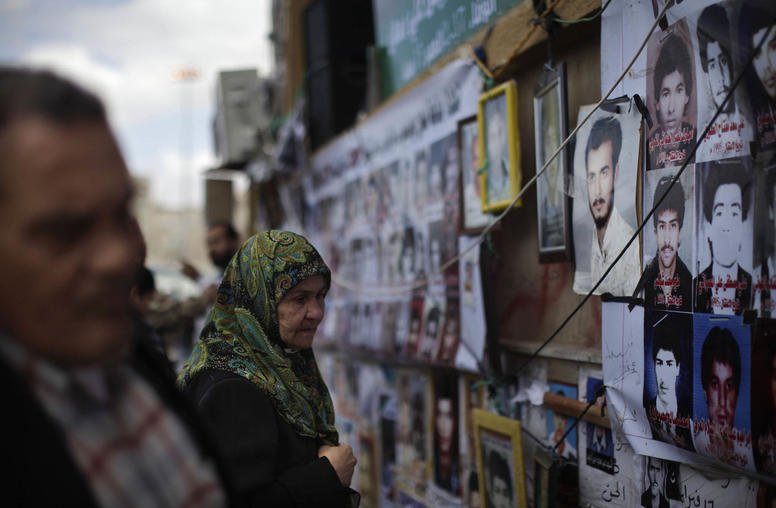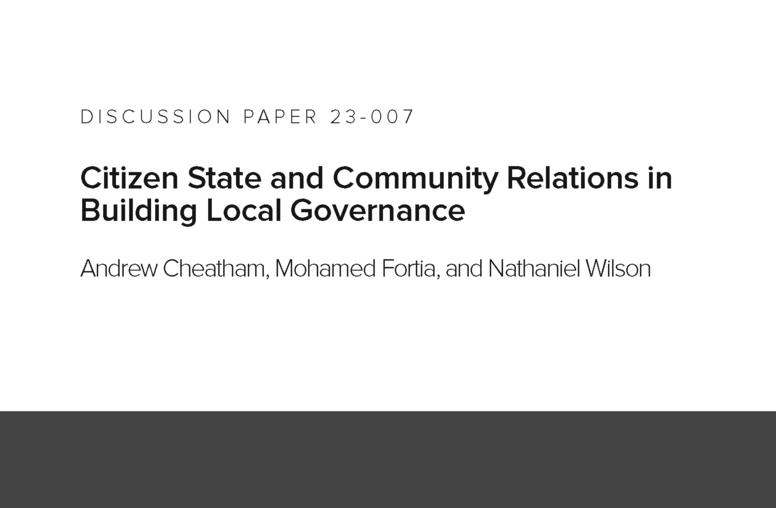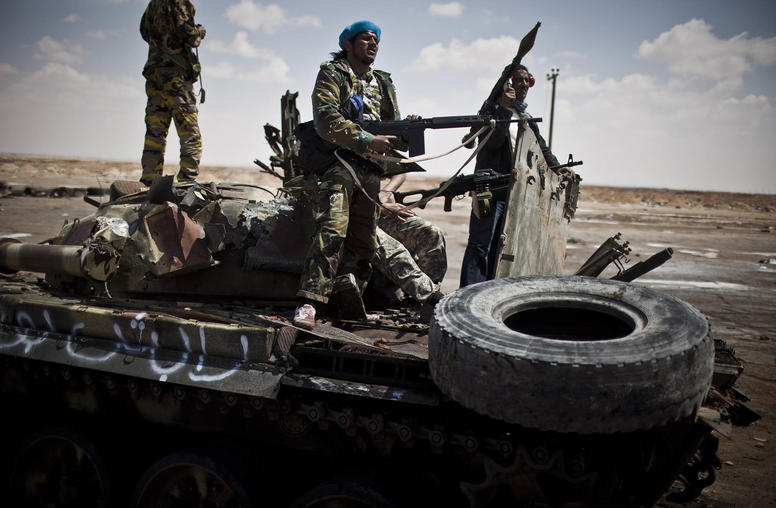Libya Timeline: Since Qaddafi's Ouster
Libya has struggled to remain unified since the Arab uprising in 2011 and the ouster of Muammar Qaddafi eight months later. During the chaos of an unraveling regime, armed groups proliferated, and Islamism emerged as a powerful new political force. In Libya’s first democratic election, voters largely opted for a secular government. But the transition was undermined by rivalries among secular parties, Islamists and independents coupled with escalating clashes among the new militias.
In 2014, parliament was plagued by political gridlock. Voter turnout dropped to only 18 percent in the 2014 poll from almost 62 percent in the 2012 election. The fragile new government disintegrated into two rival governments based in Tripoli, the capital, and in eastern Tobruk. Each government had its own armed factions.
Militias were further empowered by the 2014 split. By July, an estimated 1,600 armed groups were operating in Libya—1,300 more than in 2011. Some had links to political parties. Others were purely tribal or regionally based. All fought for power and influence.
Confrontations among Islamist and secular militias escalated nationwide for the rest of 2014. In the west, Islamists consolidated control over Tripoli, where they backed the rival General National Congress government. In the east, Khalifa Haftar rose to power. Haftar had been Qaddafi’s military chief of staff but later turned on his boss; he spent nearly two decades in exile in the United States. He returned to Libya in 2011 and launched Operation Dignity from his base in Benghazi in May 2014 to “purge” Islamists from Libya; he specifically targeted the Muslim Brotherhood.
The Islamic State’s emergence in late 2014 further complicated the crisis. It was initially most active in eastern Derna, a longstanding jihadist breeding ground. It soon established other wilayats, or “provinces,” in the southern Fezzan region and Sirte, Qaddafi’s hometown on the Mediterranean coast.
As the Islamic State expanded, the United Nations attempted to broker peace among Libya’s other warring factions. A key turning point, in December 2015, was the Libyan Political Agreement, a U.N.-brokered deal to integrate the eastern and western factions in a new Government of National Accord (GNA). The rival governments in Tripoli and Tobruk initially resisted power-sharing.
In early 2016, the new GNA set up shop in the Libyan capital. The Islamist regime in Tripoli soon ceded power to it, but the eastern House of Representatives based in Tobruk refused to accept the U.N.-backed government. The rivalry between the eastern and western sectors intensified.
Both governments were soon forced to turn their attention to the Islamic State’s growing presence. In April 2016, the GNA launched Operation “Impenetrable Wall” (al-Bunyan al-Marsoos) to expel the Islamic State from Sirte, Qaddafi’s hometown. In the east, General Haftar expanded his campaign against Islamists to Derna.
The Islamic State lost both Derna and Sirte by December 2016. But Libya was still plagued with the political divisions and security vacuums that had allowed ISIS to control chunks of Libyan territory. In 2017, little progress was made in reconciling the GNA and Haftar. Both sides agreed to a conditional ceasefire in July and an election schedule for the spring of 2018, but reconciliation talks in October ended in failure. The political situation deteriorated in December when Haftar declared that the political agreement from 2015 was void and the GNA was obsolete.
By late 2018, prospects for unification seemed somewhat less remote. In November, Libyan and international leaders met in Italy to end the political gridlock. All parties, including Haftar, expressed support for a U.N. plan that included an early 2019 conference to plan elections. In the meantime, weapons continued to proliferate; and organized crime was rampant in the economy. Libya was in no better shape than it was after the Qaddafi’s government’s fall in 2011.
This timeline was assembled with the help of graphic research by Lindsay Jodoin and editorial research by Mattisan Rowan and Garrett Nada.


